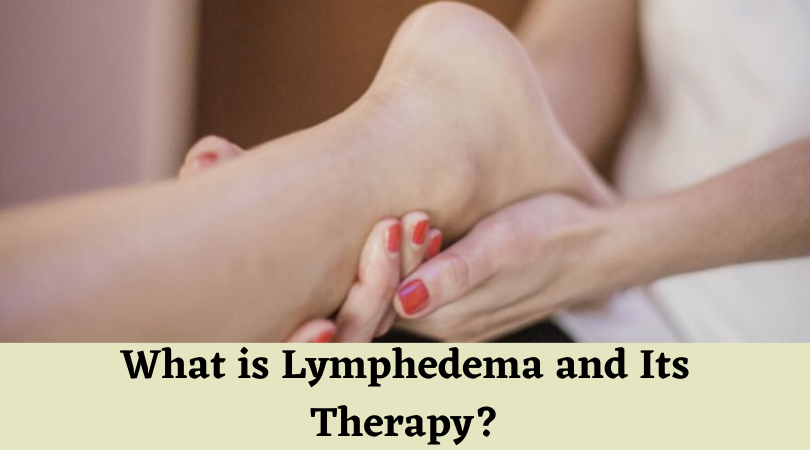What is Lymphedema and Its Therapy?
Lymphedema is a pathological condition of the lymphatic system, accompanied by impaired lymph circulation and lymph retention in the tissues. In the case of lymphedema, tissue concretion, a pronounced thickening of the limb, the development of persistent edema and the appearance of ulcers on the skin are observed.
Causes
Impaired lymph circulation due to congestion of lymph in the tissues can occur with heart failure, renal dysfunction, and hypoproteinemia. Sometimes, lymphedema develops where chronic venous insufficiency, post-thrombophlebitis syndrome, and varicose veins are diagnosed.
Lymphedema can occur on the background of congenital defects of the lymphatic system, impaired lymphatic patency due to damage, compression by neoplasms or inflammatory infiltrates, which disrupts lymph outflow. The causes of lymphedema onset are:
- prostate cancer;
- lymphoma;
- removal of the inguinal-femoral nodes;
- intensive radiation therapy of lymph outflow.
The main complication of expanded mastectomy due to the treatment of breast cancer is upper limb lymphedema. The disease onset can be observed in the case of parasitic infections or recurrent streptococcal lymphangitis.
Symptoms
With a mild degree of the disease, a symmetrical development of the passing swelling of the affected limb is observed. It s especially pronounced in the evening hours and disappears on its own in the morning. As a rule, swelling increases after intense physical exertion, prolonged stay in a horizontal position and limited mobility. At this stage, a proliferation of connective tissue and irreversible changes are absent.
With an average degree of disease, the development of persistent edema, as well as skin congestion and tension, is observed. The occurrence of persistent lymphatic edema causes increased fatigue, convulsions and impaired function of the affected limb.
A severe form of the disease is characterized by the development of irreversible changes in lymph outflow, elephantiasis, and fibrocystic tissue changes. As a progression, lymphedema becomes more expressed. The limb loses its contours and ceases to function normally.
Sometimes, contractures, eczema, deforming osteoarthritis, trophic ulcers, sepsis, and erysipelas occur.
Diagnostics
In case of damage to the lower extremities, a lymphedema therapist prescribes an ultrasound examination of the abdominal cavity and small pelvis. If lymphedema of the hands is detected, a chest x-ray is indicated. To determine the patency of blood vessels and the localization area of the lymphatic block, X-ray lymphography, lymphoscintigraphy with Tc-99m, magnetic resonance imaging, and computed tomography are prescribed. These methods allow you to identify defects in the lymphatic channel, areas of crimp and lymphangiectasia, valve failure.
Lymphedema therapy
With lymphedema, a manual lymphatic drainage massage, device pneumocompression, physiotherapeutic treatment methods and selection of compression underwear are indicated. Among the drugs, phlebotonic agents with a lymphotropic effect, immunostimulants, vasoprotectives and enzymes are prescribed to the patient. If trophic ulcers or eczema occur, local treatment is indicated. In especially severe cases with insufficient effectiveness of conservative therapy, surgical treatment is performed.
Lymphedema treated by legs’ massage
Lymphatic drainage massage is the type of physical therapy procedures aimed at removing excess fluid and toxic formations from the body. This technique is one of the most painless and safe. The main goal is to increase the speed of the lymph flow so that the organs can receive more oxygen and nutrients. With its help, decay products are more quickly excreted from inner organs. A prerequisite for the session is the coincidence of movement directions. Hands repeat the movement of lymph, given the location of the lymph nodes. The massage includes a variety of stroking and soft pressure.
Initially, lymphatic drainage massage was a medical procedure used after operations to get rid of edema. It was used the effect on the lymphatic system and for the treatment of varicose veins. Cosmetology borrowed the techniques relatively recently – about 50 years ago. With regular exposure, the following positive changes are observed:
- blood flow improves that contributes to the elimination of harmful substances from the body;
- metabolic processes are normalized;
- eliminated puffiness and manifestations of cellulite;
- stretch marks are reduced, the appearance of the skin is improved;
- regenerative processes are stimulated;
- body contours improve;
- immunity is strengthened;
- the manifestation of varicose veins is reduced.
Indications and contraindications
Lymphatic drainage sessions are prescribed for:
- local accumulation of body fat on the hips;
- puffiness;
- congestion and varicose veins;
- cellulite and sagging skin;
- fatigue;
- impaired blood circulation;
- weakened immunity.
Prevention
Prevention of impaired lymph circulation in the limbs is based on careful skincare and the correct treatment of any wounds, as well as timely treatment of the heart, venous vessels and kidneys’ diseases. One more recommendation is to find a lymphedema clinic using, for example, near me service.